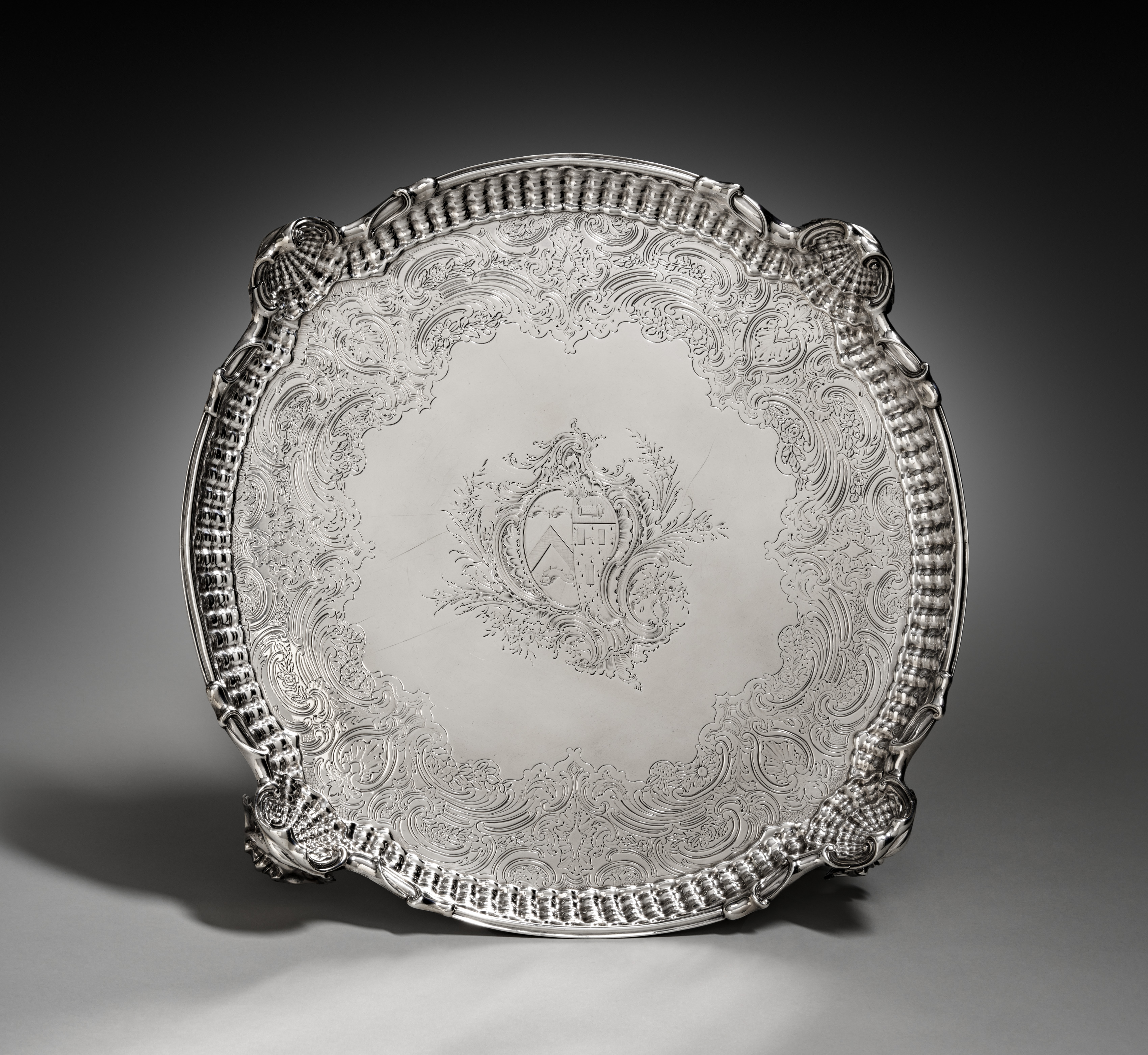The Cleveland Museum of Art
Collection Online as of April 25, 2024

Salver
1750
fabricated by
(British, 1688–1751)
Overall: 6.4 x 47 x 47 cm (2 1/2 x 18 1/2 x 18 1/2 in.)
Description
Silver in British Life,1600–1820Linked as it was to the coin of the realm, silver fulfilled a prominent role in projecting wealth, status, power, and ritual in British life during the 1600s and 1700s. Styles largely followed the taste of the reigning monarch and thus reflected the political and social alliances that underpinned the aristocracy.
The arrival of silversmiths from continental Europe infused Dutch, French, and German influences within established English taste. Elaborate forms such as two-handled cups, trophies, trays, and centerpieces not only represented wealth in their sheer silver weight but also provided royal and aristocratic owners a surface for displaying engraved coats of arms, projecting identity and social status. Less wealthy individuals made do with more functional items such as tankards, cups, or other domestic accessories. By the early 1820s, silver had become a firmly established status symbol across British society.
- British Gallery Reinstallation (June 2020). The Cleveland Museum of Art (organizer).
- {{cite web|title=Salver|url=false|author=Paul Jacques de Lamerie|year=1750|access-date=25 April 2024|publisher=Cleveland Museum of Art}}
Source URL:
https://www.clevelandart.org/art/30.2019